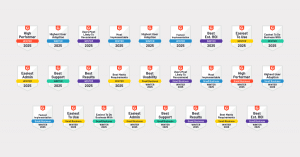As an architecture, engineering, or construction design practice with an office that works in a particular currency, what happens when you have to invoice in other countries, where the invoicing is in a different currency? This is a problem our customers who work across international borders have told us they face all the time. In terms of updates, this one’s for them.
An example is a Sydney architecture firm that does everything in Australian dollars. Everything’s well understood and simple, and then they get a project in New Zealand who says, “I want you to invoice me in New Zealand dollars”. Or it could be an Edinburgh-based engineering practice that needs to invoice their clients in Berlin in Euros. Or a New York construction designer invoicing in Canadian dollars for their Canadian customer. You get the picture.
The problem
The challenge is to be able to generate the invoice in the appropriate currency and do the exchange rate calculations at that time. So, we’ve built in a facility to either agree and fix an exchange rate as part of the contract (which is quite common — to agree, “for the rest of the contract we’ll just use this particular exchange rate”), or, you can enter an exchange rate for each invoice and use whatever the fluctuating rate is.
From a dry old accounting perspective, one of the difficulties is that within the 30-day term from when you issue an invoice and get paid, the exchange rate will change. Look at it like this — although you’ve sent out an invoice for X Aussie dollars which you converted to Y NZ dollars, when they pay their invoice it’s no longer equal to X dollars. That needed to be handled by Synergy, and now it is.
Two sides of one coin (the project manager + the CFO)
Part of the challenge is there are two sides in built environment design businesses that need a window into the progress of invoices and their payment. The project manager needs to know that it’s been paid so they can get on with project delivery; the CFO and accounts people need to know how much was gained or lost on each invoice. We’ve kept those two parts quite deliberately separate because we recognise that in an AEC business these two roles have different needs.
We wanted to make it really easy for a project manager to raise an invoice, send it, and quickly see when it’s been fully paid. The project manager doesn’t care about the exchange rate fluctuations, they just need to know, “did somebody pay my invoice?”
The CFO, on the other hand, cares very much about exchange rate fluctuations. Not only do they need to know the invoice was paid, but they need to do the accounting side of things to handle what happens with those exchange rate fluctuations.
I think we’ve achieved that. From the project manager’s point of view, it’s really easy, they just raise an invoice and send it. When the invoice gets paid, Synergy recognises it and matches it – such that we know that the invoice has been paid in full even if the exchange rate has changed and the local currency amount doesn’t match.
The financial (exchange rate) side is handled in the company’s accounting system accordingly. If they use one of our accounting add-ons — at this stage that’s Xero, QuickBooks Online and MYOB AccountRight Live — Synergy exchanges the relevant financial information (invoices from Synergy to accounting system, payments from accounting system to Synergy) with those applications very neatly, making it simple and quick. Which means all parties can get on with their jobs without delay.
Let the project roll on
The biggest point is this: the multi-currency invoicing update makes it really easy for the person or people managing the project. We know this stuff because we’re built environment design industry-specific. We’re of and for our industry so we understand the specific processes and workflows enough to provide really useful, practical features that mean our customers can just get on with delivering their great work.



